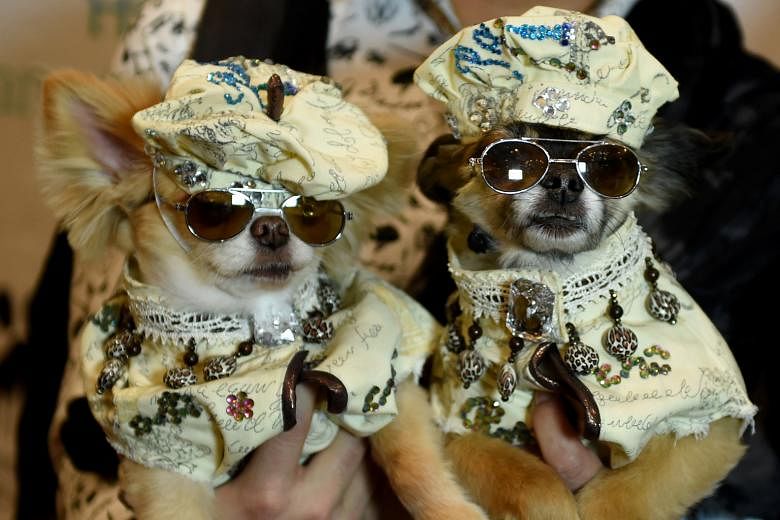It is easy to see why our pets would love us.
"The success of dogs (and other domesticated creatures) is entirely due to the fact that we take some level of care of them," said Dr Clive Wynne, director of the Canine Science Collaboratory at Arizona State University.
For years, it was believed that pet ownership was good for humans' physical and mental health.
Studies show that people with serious abnormal heart problems who own dogs live longer than those with the same heart problems who do not own pets.
And people with pets visit the doctor less often for minor ailments, Professor Allen R. McConnell, who teaches psychology at Miami University, told medical website WebMD.
Why do we love our pets so much?
This love story started with dogs, our most ancient animal companions. Analysis of dog and wolf genomes, along with numerous discoveries of ancient bone, suggests that humans domesticated canines somewhere between 13,000 and 30,000 years ago.
Recent excavations at mammoth kill sites uncovered dog bones among the remains, suggesting that dogs and humans hunted together.
But it is still not clear why we loved dogs, Dr Wynne said. That change happened around 10,000 years ago, when dogs started showing up in our artwork and burial grounds.
Last year, scientists discovered an ancient cemetery near Siberia's Lake Baikal, where dogs were buried beside humans.
If dogs evolved to be the companions of human hunters, then cats came along to be farmers' pets.
DNA evidence suggests that cats were first tamed by the Natufians, who lived in the Levant roughly 10,000 years ago and were often credited with being the inventors of agriculture.
Cats, the logic goes, are very useful for catching the rodents that inhabit grain storehouses. As the cats started to congregate around human settlements, they became more social, developing the communication skills needed to deal with other felines and humans.
For cats and dogs, the process of domestication probably started with the animals themselves - the tamer ones were better able to take advantage of the resources made available by human settlements.
Then people got involved, selectively breeding the cutest, cuddliest and most cooperative creatures until we got the pets we know today. So, that is how we came to love animals, but it still does not really explain why.
We can't love dogs and cats simply because of their utility. For one thing, domesticated livestock are also useful, but we (typically) don't name cows or cry over movies about sheep that find their way home.
Some research has also thrown a measure of doubt over the health benefits of pets.
A 2009 study of nearly 40,000 people in Sweden found that pet owners suffered from more mental health problems than people who did not own any.
Dr Wynne hopes to see more and better data, perhaps a study that examines brain-scans of people while they looked at cats and dogs.
Some argue that our love for pets is purely social - for mental well- being - rather than biological.
Dr Harold Herzog, a psychologist at Western Carolina University, wrote that our love for pets is a contagious habit that we "catch" from our peers, as evidenced by the rise and fall of fads in dog-breed ownership.
Perhaps the warm and gooey feeling we get when we look into a puppy's eyes is just a consequence of social pressure.
THE WASHINGTON POST

